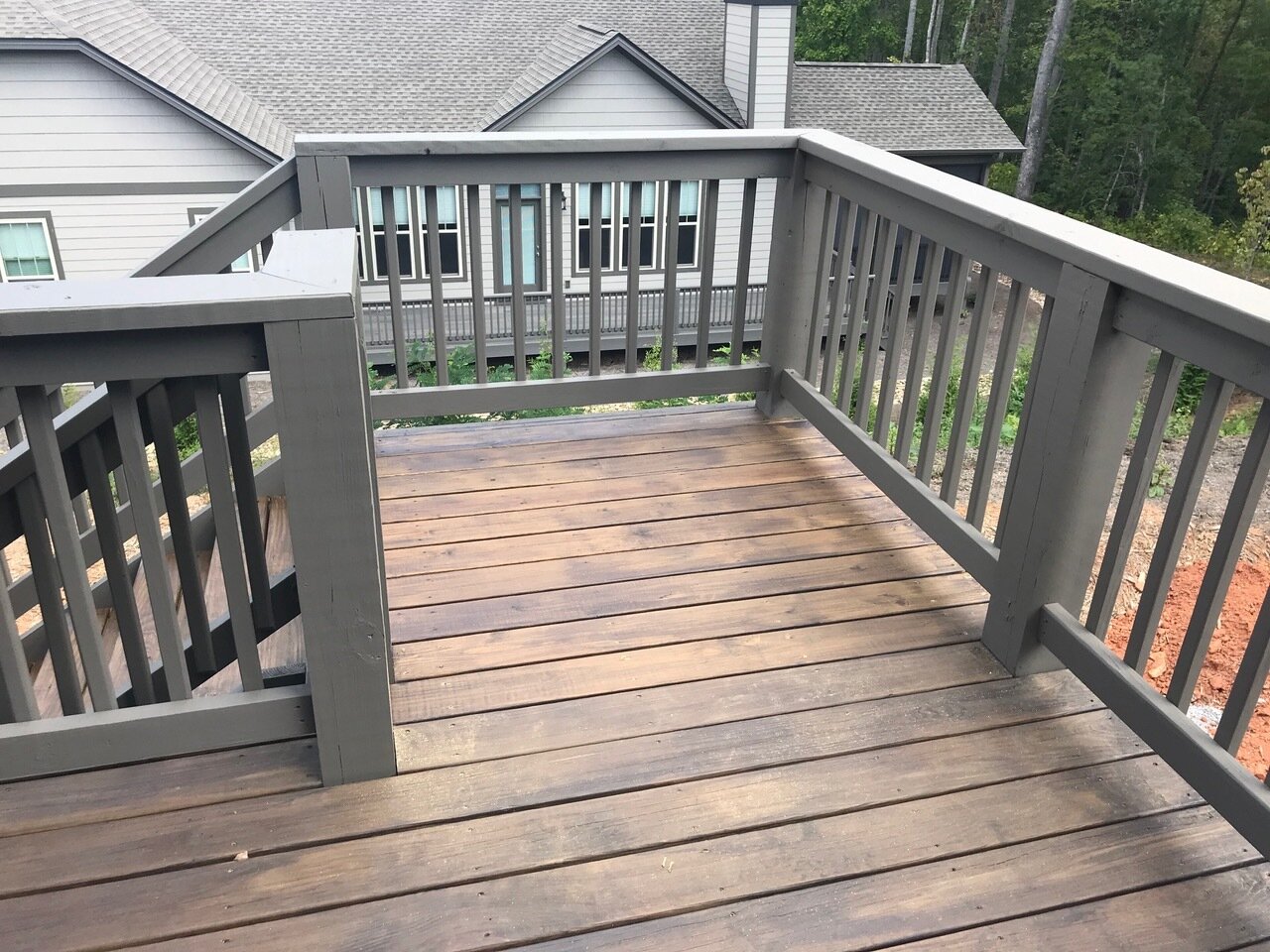Picking the Right Deck Stain: Improve and Secure Your Deck
Picking the Right Deck Stain: Improve and Secure Your Deck
Blog Article
A Comprehensive Overview to Different Sorts Of Deck Staining Techniques for Ultimate Defense and Looks
In the realm of deck maintenance, the art of tarnishing stands as a pivotal action towards both protecting the stability of your outside room and boosting its aesthetic appeal. As we navigate via the detailed globe of deck staining strategies, one starts to value the nuanced approaches that can make all the distinction in between an average coating and a remarkable one.
Comprehending Different Sorts Of Discolorations
Various types of spots are commonly used in the process of deck staining to achieve various visual and safety impacts. On the other hand, semi-transparent spots offer a balance in between color improvement and security, permitting some timber grain to reveal via.
Toners include a tip of shade to the wood while offering marginal protection, making them ideal for more recent decks with less wear. Comprehending the features and advantages of each kind of discolor is vital for accomplishing the preferred appearance and resilience for your deck.
Picking the Right Discoloration Color
When considering the aesthetic appeals of your deck staining task, the choice of tarnish shade plays a vital duty in improving the protective top qualities of the selected tarnish type (Stain Deck). The color you pick can substantially impact the total look of your deck, in addition to its capacity to hold up against the aspects gradually
When selecting a tarnish shade, it's necessary to think about the existing color pattern of your home's outside. Balancing the deck tarnish with the overall aesthetic of your residential or commercial property can produce a natural and visually attractive outdoor space. In addition, the shade of your deck stain can influence the temperature of the deck surface area; darker shades have a tendency to take in even more warmth, while lighter colors reflect sunlight and remain cooler.
Additionally, the sort of wood you are staining will certainly likewise impact how the stain shade appears. Various wood species can communicate with the stain in numerous means, potentially modifying the last shade. It's a good idea to test the tarnish on a little, low-profile location of the deck to ensure the color ends up as preferred before waging the entire project.
Preparing Your Deck for Discoloration
To ensure a long-lasting and effective deck discoloration job, detailed prep work of the deck surface is vital. Begin by cleaning up the deck extensively to remove dirt, gunk, mildew, and any kind of old end up or stain.
Evaluate the deck for any kind of damaged or rotten boards that need to be replaced. Hammer down any kind of extending nails and sand any kind of rough areas to anonymous guarantee a smooth surface for staining. Examine for any kind of loose barriers or actions that may need tightening or repair work.
As soon as the deck is tidy, completely dry, and in good repair, think about using a timber brightener to bring back the deck's natural color and open up the timber pores for far better discolor infiltration. Shield any type of neighboring plants, furnishings, or surface areas with plastic sheeting prior to proceeding with the staining process. Correct preparation is crucial to achieving a professional-looking coating and maximizing the long life of your deck discolor.
Using Discoloration With Various Strategies
For a professional and flawless finish, the technique of using tarnish plays a crucial duty in boosting the appearance and resilience of your deck. There are several methods you can use to ensure an efficient application of discolor.
It is ideal for elaborate areas and reaching in between deck boards. Back-brushing after rolling is advised useful source to also out the stain and work it right into the wood for better infiltration.
Splashing is another prominent strategy, using rate and ease of application, particularly for big deck locations. Whichever method you pick, making sure appropriate prep work and following manufacturer guidelines will aid achieve a beautiful and long-lasting tarnish surface on your deck.

Maintaining and Re-staining Your Deck
When it comes to re-staining your deck, the frequency depends on numerous variables such as the kind of tarnish made use of, the climate in your area, and exactly how much wear and tear your deck experiences. Normally, it is advised to re-stain your deck every 2-4 years to keep its security and appearances.
Before re-staining, make sure the deck is tidy, completely dry, and complimentary of any kind of previous tarnish residue. Choose a high-grade tarnish that fits your deck's material and provides the preferred degree of protection.
Verdict
In final thought, comprehending the various types of deck discolorations, selecting the right color, basics effectively preparing the deck, applying discolor with various methods, and re-staining the deck and keeping are vital actions for utmost defense and appearances. By following these actions, you can ensure that your deck remains in top condition for many years to find.
Additionally, the shade of your deck discolor can influence the temperature of the deck surface area; darker colors have a tendency to take in even more heat, while lighter colors mirror sunlight and remain cooler.
It's a good idea to examine the stain on a tiny, unnoticeable location of the deck to guarantee the shade turns out as wanted prior to continuing with the whole job.

Report this page